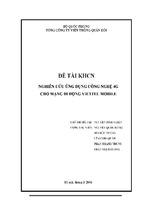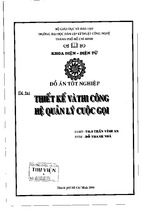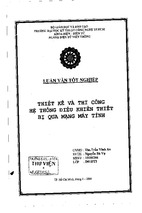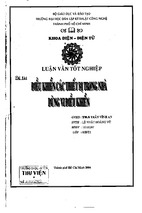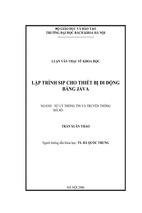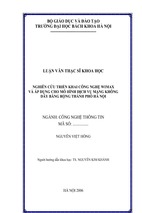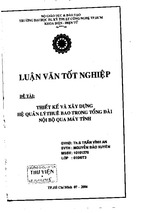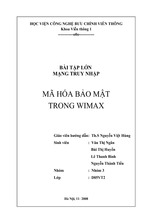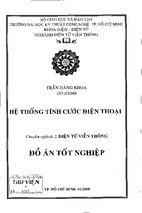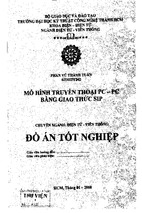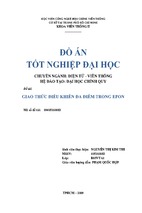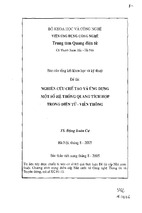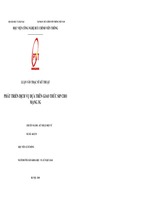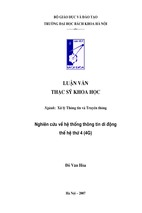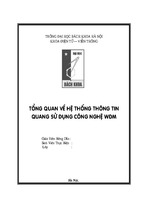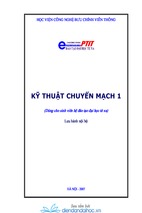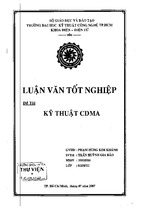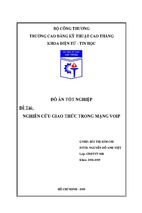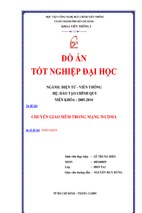Phased Array Antenna Handbook
Second Edition
For a listing of recent titles in the
Artech House Antennas and Propagation Library,
turn to the back of this book.
Phased Array Antenna Handbook
Second Edition
Robert J. Mailloux
Library of Congress Cataloging-in-Publication Data
Mailloux, Robert J.
Phased array antenna handbook / Robert J. Mailloux.—2nd ed.
p. cm.—(Artech House antennas and propagation library)
Includes bibliographical references and index.
ISBN 1-58053-689-1 (alk. paper)
1. Phased array antennas.
I. Title. II. Series.
TK6590.A6M35 2005
621.382’4—dc22
2005041996
British Library Cataloguing in Publication Data
Mailloux, Robert J.
Phased array antenna handbook.—2nd ed.—(Artech House antennas and
propagation library)
1. Phased array antennas
I. Title
621.3’824
ISBN 1-58053-689-1
Cover design by Leslie Genser
2005 ARTECH HOUSE, INC.
685 Canton Street
Norwood, MA 02062
All rights reserved. Printed and bound in the United States of America. No part of this
book may be reproduced or utilized in any form or by any means, electronic or mechanical,
including photocopying, recording, or by any information storage and retrieval system,
without permission in writing from the publisher.
All terms mentioned in this book that are known to be trademarks or service marks
have been appropriately capitalized. Artech House cannot attest to the accuracy of this
information. Use of a term in this book should not be regarded as affecting the validity of
any trademark or service mark.
International Standard Book Number: 1-58053-689-1
10 9 8 7 6 5 4 3 2 1
To my love Marlene,
and to my daughters Patrice, Julie, and Denise,
each uniquely different, but each wonderful. I so love you all.
Contents
Preface to the Second Edition
xi
Preface to the First Edition
xiii
Acknowledgments
xv
CHAPTER 1
Phased Arrays in Radar and Communication Systems
1
1.1 Introduction
1.1.1 System Requirements for Radar and Communication Antennas
1.2 Array Characterization for Radar and Communication Systems
1.2.1 Fundamental Results from Array Theory
1.2.2 Array Size Determination
1.2.3 Time-Delay Compensation
1.3 Array Architecture and Control Technology
1.3.1 Array Aperture
1.3.2 Feed Architectures
1.3.3 Beamforming Modalities and Relevant Architectures
1.3.4 RF Components for Array Control
References
1
1
12
12
34
43
44
44
47
53
55
59
CHAPTER 2
Pattern Characteristics of Linear and Planar Arrays
63
2.1 Array Analysis
2.1.1 The Radiation Integrals
2.1.2 Element Pattern Effects, Mutual Coupling, Gain Computed
from Element Patterns
2.2 Characteristics of Linear and Planar Arrays
2.2.1 Linear Array Characteristics
2.2.2 Planar Array Characteristics
2.3 Scanning to Endfire
2.4 Thinned Arrays
2.4.1 Average Patterns of Density-Tapered Arrays
2.4.2 Probabilistic Studies of Thinned Arrays
2.4.3 Thinned Arrays with Quantized Amplitude Distributions
References
63
63
68
75
75
84
89
92
93
96
99
107
vii
viii
Contents
CHAPTER 3
Pattern Synthesis for Linear and Planar Arrays
3.1 Linear Arrays and Planar Arrays with Separable Distributions
3.1.1 Fourier Transform Method
3.1.2 Schelkunov’s (Schelkunoff’s) Form
3.1.3 Woodward Synthesis
3.1.4 Dolph-Chebyshev Synthesis
3.1.5 Taylor Line Source Synthesis
3.1.6 Modified sin z/ z Patterns
3.1.7 Bayliss Line Source Difference Patterns
3.1.8 Synthesis Methods Based on Taylor Patterns: Elliott’s
Modified Taylor Patterns and the Iterative Method of Elliott
3.1.9 Discretization of Continuous Aperture Illuminations by Root
Matching and Iteration
3.1.10 Synthesis of Patterns with Complex Roots and Power Pattern
Synthesis
3.2 Circular Planar Arrays
3.2.1 Taylor Circular Array Synthesis
3.2.2 Bayliss Difference Patterns for Circular Arrays
3.3 Methods of Pattern Optimization/Adaptive Arrays
3.3.1 Pattern Optimization
3.3.2 Adaptive Arrays
3.3.3 Generalized S/N Optimization for Sidelobe Cancelers, Phased
and Multiple-Beam Arrays
3.3.4 Operation as Sidelobe Canceler
3.3.5 Fully Adaptive Phased or Multiple-Beam Arrays
3.3.6 Wideband Adaptive Control
3.4 Generalized Patterns Using Covariance Matrix Inversion
3.5 Pattern Synthesis Using Measured Element Patterns
References
109
109
109
111
113
116
121
128
130
133
139
141
153
153
155
157
157
159
162
165
168
170
175
176
180
CHAPTER 4
Patterns of Nonplanar Arrays
185
4.1 Introduction
4.1.1 Methods of Analysis for General Conformal Arrays
4.2 Patterns of Circular and Cylindrical Arrays
4.2.1 Phase Mode Excitation of Circular Arrays
4.2.2 Patterns and Elevation Scan
4.2.3 Circular and Cylindrical Arrays of Directional Elements
4.2.4 Sector Arrays on Conducting Cylinders
4.3 Spherical and Hemispherical Arrays
4.4 Truncated Conical Arrays
References
185
186
187
190
194
194
197
220
221
221
Contents
CHAPTER 5
Elements for Phased Arrays
5.1 Array Elements
5.2 Polarization Characteristics of Infinitesimal Elements in Free Space
5.3 Electric Current (Wire) Antenna Elements
5.3.1 Effective Radius of Wire Structures with Noncircular Cross
Section
5.3.2 The Dipole and the Monopole
5.3.3 Special Feeds for Dipoles and Monopoles
5.3.4 Dipoles Fed Off-Center
5.3.5 The Sleeve Dipole and Monopole
5.3.6 The Bowtie and Other Wideband Dipoles
5.3.7 The Folded Dipole
5.3.8 Microstrip Dipoles
5.3.9 Other Wire Antenna Structures
5.3.10 Broadband Flared-Notch, Vivaldi, and Cavity-Backed
Antennas
5.4 Aperture Antenna Elements
5.4.1 Slot Elements
5.4.2 Waveguide Radiators
5.4.3 Ridged Waveguide Elements
5.4.4 Horn Elements
5.5 Microstrip Patch Elements
5.5.1 Microstrip Patch
5.5.2 The Balanced Fed Radiator of Collings
5.6 Elements for Alternative Transmission Lines
5.7 Elements and Row (Column) Arrays for One-Dimensional Scan
5.7.1 Waveguide Slot Array Line Source Elements
5.7.2 Printed Circuit Series-Fed Arrays
5.8 Elements and Polarizers for Polarization Diversity
References
CHAPTER 6
Summary of Element Pattern and Mutual Impedance Effects
6.1 Mutual Impedance Effects
6.2 Integral Equation Formulation for Radiation and Coupling in Finite
and Infinite Arrays
6.2.1 Formulation and Results for Finite Arrays
6.2.2 Formulation and Results for Infinite Arrays
6.3 Array Blindness and Surface Waves
6.4 Impedance and Element Patterns in Well-Behaved Infinite Scanning
Arrays
6.5 Semi-Infinite and Finite Arrays
6.6 Impedance Matching for Wide Angle and Wideband Radiation
6.6.1 Reduced Element Spacing
6.6.2 Dielectric WAIM Sheets
6.7 Mutual Coupling Phenomena for Nonplanar Surfaces
ix
225
225
225
227
228
228
234
238
238
241
241
246
247
248
251
252
254
256
257
258
258
268
269
269
272
275
277
282
291
291
293
293
297
306
319
327
329
331
333
335
x
Contents
6.8 Small Arrays and Waveguide Simulators for the Evaluation of Phased
Array Scan Behavior
339
6.8.1 Several Useful Simulators
344
References
346
CHAPTER 7
Array Error Effects
7.1 Introduction
7.2 Effects of Random Amplitude and Phase Errors in Periodic Arrays
7.2.1 Average Pattern Characteristics
7.2.2 Directivity
7.2.3 Beam Pointing Error
7.2.4 Peak Sidelobes
7.3 Sidelobe Levels Due to Periodic Phase, Amplitude, and Time-Delay
Quantization
7.3.1 Characteristics of an Array of Uniformly Illuminated
Contiguous Subarrays
7.3.2 Phase Quantization in a Uniformly Illuminated Array
7.3.3 Reduction of Sidelobes Due to Phase Quantization
7.3.4 Subarrays with Quantized Amplitude Taper
7.3.5 Time Delay at the Subarray Ports
7.3.6 Discrete Phase or Time-Delayed Subarrays with Quantized
Subarray Amplitudes
References
353
353
353
354
358
358
359
362
364
365
371
374
375
375
377
CHAPTER 8
Special Array Feeds for Limited Field-of-View and Wideband Arrays
8.1 Multiple-Beam Systems
8.1.1 Beam Crossover Loss
8.1.2 Orthogonality Loss and the Stein Limit
8.1.3 Multiple-Beam Matrices and Optical Beamformers
8.2 Antenna Techniques for Limited Field-of-View Systems
8.2.1 Minimum Number of Controls
8.2.2 Periodic and Aperiodic Arrays for Limited Field of View
8.2.3 Constrained Network for Completely Overlapped Subarrays
8.2.4 Reflectors and Lenses with Array Feeds
8.2.5 Practical Design of a Dual-Transform System
8.3 Wideband Scanning Systems
8.3.1 Broadband Arrays with Time-Delayed Offset Beams
8.3.2 Contiguous Time-Delayed Subarrays for Wideband Systems
8.3.3 Overlapped Time-Delayed Subarrays for Wideband Systems
References
379
379
381
384
392
399
400
402
421
429
452
455
456
456
459
467
List of Symbols
473
About the Author
477
Index
479
Preface to the Second Edition
The second edition follows the same basic format as the first, but it is updated to
improve clarity in some cases or to present material in a manner more useful for
engineering use, but mostly to reflect the advances in technology that have taken
place since the first edition’s publication in 1994. The goal of the text is the same:
to present the subject of arrays with the broad coverage of a ‘‘handbook’’ for
engineering use, but to include enough details so that the interested reader can
reproduce many of the more important results and benefit from the insights that
the mathematics provide. Equation (1.49) of Chapter 1 expresses the array far field
as the product of an element pattern and the time delayed array factor. This
equation does not represent any practical array and in fact the interesting aspects
of array technology are precisely those that are not included in this equation. The
equation does not even hint at the constraints that have been the real drivers of
array technology since the beginning.
Array technology has progressed primarily because of limitations imposed by
practical engineering; by the cost, size, weight, manufacturability, and the electromagnetic issues of polarization, sidelobe and gain requirements, the limitations of
phase, and amplitude control and reliability. These have driven the whole technology to invention and progress. In the 11 years since the first publication of this
book, these stimuli have led to much more extensive use of printed antennas,
conformal arrays, solid-state T/R modules, time-delay devices, optical and digital
beamforming, and a variety of new and more powerful methods of computation
and synthesis.
This edition includes a number of new features and a large number of added
modern references. Sections on components and devices for array control and on
overall control choices have been added to Chapter 1 in order to highlight the
technologies involved in array architecture and to explain the design limitations
imposed by these components. This chapter also includes a revised section on array
noise calculation. Pattern synthesis has also progressed significantly throughout
the past 11 years since the first edition was published, but mostly through the
use of numerical optimization techniques like neural network synthesis, genetic
algorithms, and synthetic annealing. Although not able to devote the space for
complete discussions of these techniques, I did include enough detail to allow the
practical use of the alternating projection method because of its ready adaptability
to array synthesis and the ease of handling various constraints. Additional synthesis
topics included are the formation of troughs in array patterns by modifying the
array covariance matrix and a discussion and added references on array failure
xi
xii
Preface to the Second Edition
correction. Material and references have also been added to describe new elements
for arrays including microstrip, stripline, and wideband flared notch elements.
Chapter 8 has had significant changes and inclusion of new material, most
importantly to emphasize the new work of Skobelev and colleagues, who have
made a significant contribution to antennas that have a limited field of view. I
have included some new work on subarrays for including time delay for widerband arrays, including partially overlapped sections of overlapped subarrays and
some data on subarrays of irregular shapes.
Preface to the First Edition
Any pile of tin with a transmission line exciting it may be called an antenna. It is
evident on physical grounds that such a pile of tin does not make a good antenna,
and it is worthwhile to search for some distinguishing characteristics that can be
used to differentiate between an ordinary pile of tin and one that makes a good
antenna.
This fascinating quote, discovered by my friend Phil Blacksmith, is taken out
of context from Volume 8 of the MIT Radiation Laboratory series The Principles
of Microwave Circuits (C. G. Montgomery et al., editors, McGraw-Hill, 1948). It
is a fitting introduction to a text that attempts to address today’s advanced state
of antenna array engineering. The present and future of antenna technology are
concerned with a degree of pattern control that goes well beyond the simple choice
of one or another pile of tin. Present antenna arrays are a union of antenna
technology and control technology; and they combine the radiation from thousands
of antennas to form precise patterns with beam peak directions that can be controlled electronically, with very low sidelobe levels, and pattern nulls that are moved
to suppress radiation from unwanted directions.
Antenna technology remains interesting because it is dynamic. The past years
have seen the technology progress from frequency-scanned and electronically
steered arrays for scanning in one plane to the precise two-dimensional control
using digital systems that can include mutual interactions between elements. Adaptive control has been used to move antenna pattern nulls to suppress interfering
signals. Even the basic elements and transmission lines have changed, with a variety
of microstrip, stripline, and other radiators replacing the traditional dipoles or
slots fed by coaxial line or waveguides. Finally, the state of development in two
fields—devices and automation—has brought us to an era in which phased arrays
will be produced automatically, not assembled piece by piece, as has been the
standard to date. This revolution in fabrication and device integration will dictate
entirely new array architectures that emphasize monolithic fabrication with basic
new elements and the use of a variety of planar monolithic transmission media.
Using digital processing or analog devices, future arrays will finally have the
time-delay capability to make wideband performance possible. They will, in many
cases, have reconfigurable apertures to resonate at a number of frequencies or
allow the whole array surface to be restructured to form several arrays performing
separate functions. Finally, they will need to be reliable and to fail gracefully, so
they may incorporate sensing devices to measure the state of performance across
the aperture and redundant circuitry to reprogram around failed devices, elements,
or subarrays.
xiii
xiv
Preface to the First Edition
Although it contains some introductory material, this book is intended to
provide a collection of design data for radar and communication system designers
and array designers. Often the details of a derivation are omitted, except where
they are necessary to fundamental understanding. This is particularly true in the
sections on synthesis, where the subject matter is well developed in other texts. In
addition, the book only briefly addresses the details of electromagnetic analysis,
although that topic is the heart of antenna research. That subject is left as worthy
of more detail than can be given in such a broad text as this.
Chapter 1, ‘‘Phased Arrays for Radar and Communication Systems,’’ is written
from the perspective of one who wishes to use an array in a system. The chapter
emphasizes array selection and highlights those parameters that determine the
fundamental measurable properties of arrays: gain, beamwidth, bandwidth, size,
polarization, and grating lobe radiation. The chapter includes some information
to aid in the trade-off between so-called ‘‘active’’ arrays, with amplifiers at each
element, and ‘‘passive’’ arrays, with a single power source. There are discussions
of the limitations in array performance due to phase versus time-delay control,
transmission feed-line losses, and tolerance effects. Finally, there are discussions
of special techniques for reducing the number of controls in arrays that scan
over a limited spatial sector and methods for introducing time delay to produce
broadband performance in an array antenna. The abbreviated structure of this
introductory, ‘‘system-level’’ chapter necessitated frequent references to subsequent
chapters that contain more detailed treatment of array design.
Chapter 2 and all the other chapters in the book are written to address the
needs of antenna designers. Chapter 2, ‘‘Pattern Characteristics and Synthesis of
Linear and Planar Arrays,’’ includes the fundamental definitions of the radiation
integrals and describes many of the important issues of array design. Element
pattern effects and mutal coupling are treated in a qualitative way in this chapter
but in more detail in Chapter 6. The primary topics of this chapter are the characteristics of antenna patterns and their directivity. The chapter also addresses several
special types of arrays, including those scanned to endfire and thinned arrays.
Chapter 3 is a brief treatment of array synthesis, and it lists basic formulas
and references on a wide variety of techniques for producing low sidelobe or
shaped antenna patterns. The chapter includes a discussion of pattern optimization
techniques, such as those for adaptive array antennas. Chapter 4 treats arrays on
nonplanar surfaces, and Chapter 5 describes the variety of array elements, relevant
transmission lines, and array architectures.
Chapters 6 and 7 treat several factors that limit the performance of array
antennas. Chapter 6 shows some of the effects of mutual coupling between array
elements. This interaction modifies the active array element patterns and can cause
significant impedance change with scan. This complex subject is treated with the
aid of two appendices. Chapter 7 describes pattern distortion due to random phase
and amplitude errors at the array elements and to phase and amplitude quantization
across the array.
Chapter 8, the final chapter, summarizes techniques for three kinds of specialpurpose arrays: multiple-beam systems, arrays for limited sector scan, and arrays
with wideband time-delay feeds. A vast technology has developed to satisfy these
special needs while minimizing cost, and this technology has produced affordable
high-gain electronic scanning systems using scanning arrays in conjunction with
microwave quasioptical systems or advanced subarray techniques.
Acknowledgments
In completing this second edition I am again reminded of the powerful stimulation
that led to the first book and indeed to my enthusiasm for this field of research.
Some of these are my early mentors R. W. P. King and T. T. Wu of Harvard and
Carl Sletten and two deceased colleagues, Phillipp Blacksmith and Hans Zucker
of the Air Force Cambridge Research Laboratory, one who had a view of the
practical and one who had a view of the infinite. I thank my Air Force colleagues
Allan Schell, Jay Schindler, Peter Franchi, Hans Steyskal, Jeff Herd, John McIlvenna,
Boris Tomasic, and Ed Cohen of Arcon. Of particular help by their contributions
to the second edition were Hans Steyskal, Jeff Herd, Harvey Schuman, and Marat
Davidovitz.
I am grateful to Livio Poles and David Curtis for their vision of the important
new areas for this technology and their energy to build an excellent program within
the Air Force Research Laboratory, and to Arje Nachman and the Air Force Office
of Scientific Research for the support of the more fundamental aspects of the
antenna research.
Once again I am especially grateful to my wife Marlene for her support and for
again tolerating the clutter of reference books and notes that follows me wherever I
go, and to my daughters Patrice, Julie, and Denise for their love and encouragement.
xv
CHAPTER 1
Phased Arrays in Radar and
Communication Systems
1.1 Introduction
Phased array antennas consist of multiple stationary antenna elements, which are
fed coherently and use variable phase or time-delay control at each element to scan
a beam to given angles in space. Variable amplitude control is sometimes also
provided for pattern shaping. Arrays are sometimes used in place of fixed aperture
antennas (reflectors, lenses), because the multiplicity of elements allows more precise control of the radiation pattern, thus resulting in lower sidelobes or careful
pattern shaping. However, the primary reason for using arrays is to produce a
directive beam that can be repositioned (scanned) electronically. Although arrays
with fixed (stationary) beams and multiple stationary beams will be discussed in this
text, the primary emphasis will be on those arrays that are scanned electronically.
The radar or communication system designer sees the array antenna as a
component (with measurable input and output) and a set of specifications. The
array designer sees the details of the array and the physical and electrical limitations
imposed by the radar or communications system, and within those constraints
seeks to optimize the design. This chapter is written from the perspective of, and
for, the system designer. The remainder of the text discusses array design issues.
1.1.1 System Requirements for Radar and Communication Antennas
In accordance with the principle of power conservation, the radiated power density
in watts/square meter at a distance R from a transmitter with an omnidirectional
antenna is given by
S=
1 Prad
4 R 2
(1.1)
where Prad is the total radiated power (watts), and the power density S is shown
here as scalar.
Directive Properties of Arrays
Figure 1.1 shows an array of aperture antennas and indicates the coordinate system
used throughout the text. If the antenna has a directional pattern with power
1
2
Phased Arrays in Radar and Communication Systems
Figure 1.1 Array and coordinate systems.
density S( , ), then the antenna pattern directivity D ( , ) is defined so that the
power density in a specified polarization at some distant spherical surface a distance
R 0 from the origin is:
P D ( , )
S( , ) = rad
4 R 2
(1.2)
so that
D ( , ) =
4 R 2S( , )
Prad
(1.3)
or
D ( , ) =
4 S( , )
冕
(1.4)
S( , ) d⍀
⍀
where the last integral is over the solid angle that includes all of the radiation. In
the most general case it is
冕
⍀
2
S( , ) d⍀ =
冕 冕
d
0
d S( , ) sin
(1.5)
0
The expression above (1.4) is the definition of directivity and implies that the
power density used is the total in both polarizations (i.e., the desired or copolarization, and the orthogonal or crossed polarization ).
1.1 Introduction
3
If there is no direction ( , ) specified, then the directivity implied is the
maximum directivity, denoted D 0:
D 0 = max [D ( , )]
(1.6)
which is a meaningful parameter primarily for antennas with narrow beamwidths
(pencil beam antennas).
Directivity is the most fundamental quality of the antenna pattern, because it
is derived from only the pattern shape. The radiated power is less than the input
power Pin by an efficiency factor ⑀ L , which accounts for circuit losses, and by the
reflected signal power
Prad = ⑀ L Pin (1 − | ⌫ |2 )
(1.7)
where ⌫ is the antenna reflection coefficient measured at the feed transmission
line; thus, it is appropriate to define array parameters that relate to measurable
parameters at the input transmission line.
The IEEE standard definition of antenna gain does not include reflection loss;
rather, it defines the antenna gain G( , ) as the directivity for each polarization
reduced by the efficiency factor ⑀ L . This definition is primarily useful for single,
nonscanned antennas that have a well-defined reflection coefficient at any frequency. In that situation, the gain describes an antenna that is matched (⌫ = 0).
The input impedance of an array changes with scan; thus, it is more appropriate
to define a parameter that Lee calls realized gain [1], which includes both the
reflection and dissipative losses, and for which I’ll use the symbol G R ( , ). It will
be shown later that this realized gain relates to a measurable property of an array
that is of sufficient fundamental nature to justify not using the IEEE standard.
The power density in the far field can thus be written in terms of a gain function
G( , ), with
S( , ) =
1 Pin R
G ( , )
4 R 2
(1.8)
where
G R ( , ) = ⑀ L (1 − | ⌫ | 2 ) D( , )
(1.9)
Again, the peak value of the gain distribution is called the gain G 0 .
R
GR
0 = max [G ( , )]
(1.10)
In practice, the maximum directivity of a planar aperture is achieved for uniform
amplitude and phase illumination of the aperture (except for the special case of
superdirectivity) [2] and is
- Xem thêm -

